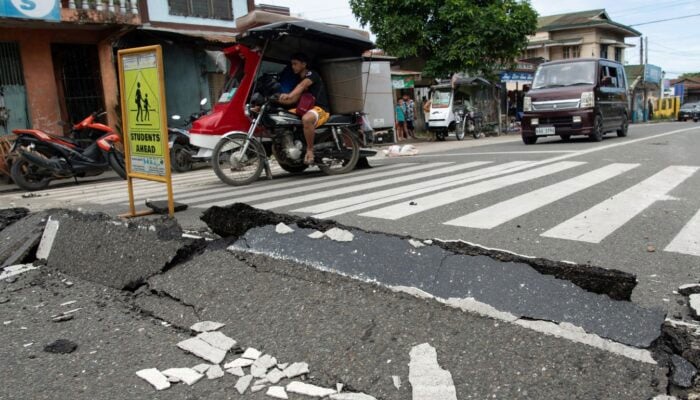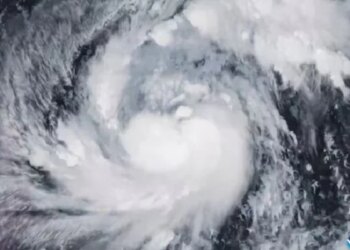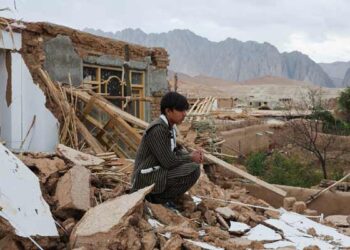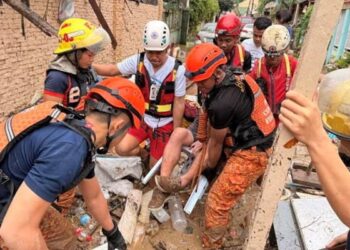Select Language:
A powerful earthquake in central Philippines has resulted in nearly 60 fatalities, with hospitals on Cebu Island overwhelmed by injured patients as emergency teams evacuated dozens of bodies amidst chaos. The shallow 6.9 magnitude quake struck at 9:59 p.m. Tuesday near Bogo, a city with a population of 90,000, located off the island’s northern tip, according to the US Geological Survey.
Children crying and adults screaming endured treatment on beds beneath blue tents set up in the Cebu Provincial Hospital’s driveway, having been hurried out due to fears of aftershocks and structural instability. Hundreds of tremors shook the area overnight, prompting hospital staff to carry black body bags into vans headed to local mortuaries, observed reporters.
Deputy Civil Defense Administrator Rafaelito Alejandro stated that up to 60 fatalities have been confirmed so far, adding that casualty numbers are still changing as new reports come in. The National Disaster Risk Reduction and Management Council earlier mentioned 147 injured across the central islands, with 22 buildings damaged.
Rescue worker Teddy Fontillas, 56, explained he had not slept, noting that some patients had to be moved to other hospitals due to the Bogo hospital reaching capacity. “We’re already overwhelmed, so we had to transfer some to Cebu City,” he said, referring to the provincial capital about 60 miles south. “I’m struggling, but it’s necessary to help our patients.”
Cebu Province’s governor, Pamela Baricuatro, shared on Facebook that medical teams were tending to some injuries outside the hospital because of the high volume of patients.
Footage captured by residents and circulated on social media showed an old Catholic church on Bantayan Island swaying violently moments before its belfry collapsed into the courtyard. Witness Martham Pacilan, 25, recalled hearing a loud boom before rocks fell from the structure, but luckily no one was hurt.
On nearby Cebu bridges, travelers had to dismount from motorcycles and hold onto rails as structures violently shook. Buildings across Cebu City sustained damage, with online merchant Jayford Maranga, 21, describing how he hid under a restaurant table to avoid a falling metal ceiling in a shopping mall. “It felt like the Earth had stopped spinning, and then the mall started shaking,” he said, noting his friend was slightly injured during the chaos.
The provincial government has called for volunteer medical assistance through social media, warning of potential victims trapped beneath collapsed structures. Rescue efforts continued through the night, despite difficulty caused by darkness and ongoing aftershocks. The Philippine Institute of Volcanology and Seismology reported 379 aftershocks, and power outages affected Cebu and nearby islands, though power was restored in Cebu shortly after midnight.
Damage assessments indicated a collapsed school and commercial building in Bantayan and severe destruction at a Bogo fast food restaurant. Bantayan resident Agnes Merza, 65, recounted that her kitchen tiles cracked during the quake, and neighbors rushed out of their homes in panic. Her teenage assistants hid under a table following safety instructions, she added.
Village roads also suffered damage, with cracks about two inches wide seen in Tabogon. The initial seismic reading was 7.0 before being revised down to 6.9, and authorities confirmed there was no tsunami threat. Earthquakes are common in the Philippines due to its position on the Pacific “Ring of Fire,” which hosts intense seismic activity from Japan through Southeast Asia and across the Pacific. Most tremors are minor, but powerful quakes like this can strike unpredictably without warning.







